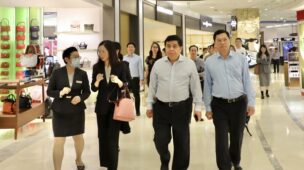Tempo de leitura: 8 minutos
Does living near Special Economic Zones make African households better off? New evidence suggests it can, revealing substantial gains in wealth, utilities, and education.
The Special Economic Zone: A popular development policy tool
Special Economic Zones (SEZs) have become a sought-after place-based development policy tool globally, with over 7,000 SEZs established across 145 countries as of 2019 (UNCTAD 2019). Initially concentrated in Asia and Latin America, SEZs rapidly proliferated in developing countries as governments sought to attract foreign direct investment, accelerate industrialisation, and create jobs through targeted incentives such as tax holidays, duty-free imports, and streamlined regulations.
While SEZs accounted for a significant share of exports and employment in the host countries, their outcomes are country-specific. In China, SEZs are credited with generating employment, raising wages, and creating agglomeration economies (Wang 2013, Lu et al. 2019, Zeng 2021). In contrast, evidence from countries like India is more mixed, reflecting challenges related to land acquisition, governance, and weak linkages with the domestic economy (Alkon 2018, Aggarwal and Kokko 2022, Görg and Mulyukova 2024).
Africa has been a latecomer to the SEZ trend but is quickly catching up. By 2022, 47 African countries had adopted SEZ policies, with 203 operational and nearly 100 more under development (Rodríguez-Pose et al. 2022). Yet there is a lack of comprehensive evidence on the impacts of SEZs in Africa. Only a handful of studies examine their effectiveness (Glick and Roubaud 2006, Ackah et al. 2025). As the policy continues to expand in Africa, understanding who the policy benefits, and in which contexts, has become a pressing priority for policymakers on the continent.
Studying the economic impact of African SEZs
Our recent research (Abagna, Hornok, and Mulyukova 2025) addresses this policy gap by examining the impact of SEZs on the economic well-being of nearby households in Africa. Drawing on data from ten countries that collectively account for over half of the continent’s SEZs and nearly 50% of its population and economic output, our research offers continent-wide perspectives that are both broad in scope and locally grounded. A key innovation lies in the use of household data from the Demographic and Health Surveys (DHS) spatially linked to SEZs–a novel approach in SEZ research. We estimate effects using households in 10-km-wide distance bands (0-10 km, 10-20 km, etc.) around SEZ sites, enabling more precise identification of localised impacts. The identification strategy exploits variation in SEZ establishment years across locations, comparing outcome trajectories of households at similar distances from SEZs but exposed to the policy at different times. To test the strategy’s validity, we examine pre-intervention trends across SEZ locations using event study analyses of nightlight intensity, a proxy for local economic development. These reveal no differential pre-trends, enhancing the credibility of our findings.
Significant wealth gains in SEZ vicinity
We measure households’ economic well-being by the DHS wealth index, which combines household responses on ownership of and access to key assets and services (e.g. a refrigerator, finished flooring, improved sanitation) into a single composite indicator. Estimates show that SEZ policy significantly boosts household wealth in the vicinity of SEZs (Figure 1). The wealth gain of 0.25 points within 10 km is economically substantial and roughly comparable to the wealth difference associated with owning a personal computer in Nigeria in 2008. However, the effect is localised, with no significant impact, either positive or negative, observed beyond the 10 km radius.
Figure 1: Wealth effects by distance from SEZs
Notes: Estimates with 95% confidence intervals by distance band.
SEZ gains are broadly shared in local communities
While SEZs significantly increase in-migration to nearby areas, the rise in wealth is neither driven solely by population shifts nor confined to migrants. Native households experience comparable wealth gains and exhibit similar distance patterns as the overall sample. Furthermore, we find no evidence of SEZ-induced native out-migration that may result from displacement or rising local living costs.
The wealth gains are also broadly distributed across the wealth spectrum. Estimates by decile of the wealth distribution within 10 km (Figure 2) indicate that both poorer and richer segments of the population benefit similarly, with the third and fourth deciles showing the largest gains, though these estimates carry considerable uncertainty. Thus, in contrast to research on SEZs in Nicaragua (Picarelli 2016, Grogan 2025), African SEZs do not appear to exacerbate local inequality; rather, they contribute to the strengthening of the middle class.
Figure 2: Wealth effects across the wealth distribution
Notes: Estimates with 95% confidence intervals by decile of the wealth distribution (QTE), along with the average estimate (ATE), for households within 10 km.
Components of wealth increases due to SEZs in Africa
Decomposing the wealth index, we show that the establishment of SEZs leads to improved access to household utilities (such as electricity and sanitation), enhanced housing quality, and increased ownership of durable goods (such as televisions, refrigerators, and mobile phones). Moreover, households are less likely to own bicycles and more likely to own cars after an SEZ is established, patterns that are indicative of urbanisation trends. Notably, SEZs do not significantly reduce the likelihood of land or livestock ownership among nearby residents, suggesting limited dispossession or large-scale land acquisition.
Occupational shifts and increasing educational attainment
One direct channel through which SEZs can enhance household wealth is by expanding employment opportunities for local residents. Indeed, we document that females are significantly less likely to work in agricultural occupations after an SEZ is established. However, we do not find a significant effect on their overall probability of being employed in the past year. This contrasts with Brussevich (2024) and Zhao and Qu (2024), which report improved labour market and within-household status for women in Cambodia and China, respectively, in response to SEZ policies. However, these differences should be interpreted with caution, as our data on women is limited to mothers aged 15-49 and may not reflect impacts on the broader female working-age population.
Looking at educational outcomes, we find that females and their partners are more likely to complete secondary education after an SEZ is established. These effects are particularly strong among young females and are observed in both native and immigrant households, suggesting that SEZs not only attract skilled migrants but also foster human capital accumulation among natives. Overall, these results are in line with previous research on sectoral shifts (Gallé et al. 2024, Tafese et al. 2025) and educational outcomes in response to SEZs (Lu et al. 2023).
Policy implications: Special economic zones
Our analysis reveals that households within 10 km of SEZs in Africa experience significant improvements in economic well-being, as reflected in better access to utilities, improved housing, higher consumption of durable goods, and enhanced educational outcomes. These benefits are broadly shared, with the largest gains accruing to the lower-middle class and are not limited to immigrant households. SEZs thus emerge as a valuable policy instrument for fostering urbanisation and enhancing household well-being in targeted areas. This is especially pertinent for Africa, where regional disparities in economic opportunity remain pronounced. By helping to reduce such inequalities, SEZs hold promise for promoting more inclusive economic growth across the continent.
References
Abagna, M A, C Hornok and A Mulyukova (2025), “Place-based policies and household wealth in Africa,” Journal of Development Economics, 103482.
Ackah, C G, R D Osei, N Y A Owusu and V Acheampong (2025), “Special Economic Zones and household welfare: New evidence from Ghana,” International Journal of the Economics of Business, 1–23.
Aggarwal, A and A Kokko (2022), “SEZs and poverty reduction: Evidence from Andhra Pradesh, India,” International Journal of Emerging Markets, 17(8): 1793–1814.
Alkon, M (2018), “Do special economic zones induce developmental spillovers? Evidence from India’s states,” World Development, 107: 396–409.
Brussevich, M (2024), “The socioeconomic impact of special economic zones: Evidence from Cambodia,” The World Economy, 47(1): 362–387.
Gallé, J, D Overbeck, N Riedel and T Seidel (2024), “Place-based policies, structural change and female labor: Evidence from India’s special economic zones,” Journal of Public Economics, 240: 105259.
Glick, P and F Roubaud (2006), “Export processing zone expansion in Madagascar: What are the labour market and gender impacts?” Journal of African Economies, 15(4): 722–756.
Görg, H and A Mulyukova (2024), “Place-based policies and firm performance: Evidence from special economic zones in India,” European Economic Review, 165: 104752.
Grogan, L (2025), “Employment without empowerment: Low-wage manufacturing and intimate partner violence in Nicaragua, 1998–2012,” World Development (forthcoming).
Lu, Y, J Wang and L Zhu (2019), “Place-based policies, creation, and agglomeration economies: Evidence from China’s economic zone program,” American Economic Journal: Economic Policy, 11(3): 325–360.
Lu, F, W Sun and J Wu (2023), “Special economic zones and human capital investment: 30 years of evidence from China,” American Economic Journal: Economic Policy, 15(3): 35–64.
Picarelli, N (2016), “Who really benefits from export processing zones? Evidence from Nicaraguan municipalities,” Labour Economics, 41: 318–332.
Rodríguez-Pose, A, F Bartalucci, S A Frick, A U Santos-Paulino and R Bolwijn (2022), “The challenge of developing special economic zones in Africa: Evidence and lessons learnt,” Regional Science Policy & Practice, 14(2): 456–481.
Tafese, T, J Lay and V Tran (2025), “From fields to factories: Special economic zones, foreign direct investment, and labour markets in Vietnam,” Journal of Development Economics, 103467.
United Nations Conference on Trade and Development (UNCTAD) (2019), World Investment Report 2019: Special Economic Zones, UN.
Wang, J (2013), “The economic impact of special economic zones: Evidence from Chinese municipalities,” Journal of Development Economics, 101: 133–147.
Zeng, D Z (2021), “The past, present, and future of special economic zones and their impact,” Journal of International Economic Law, 24(2): 259–275.
Zhao, C and X Qu (2024), “Place-based policies, rural employment, and intra-household resources allocation: Evidence from China’s economic zones,” Journal of Development Economics, 167: 103210.
Fonte: VoxDev | Foto: Reprodução







Os comentários foram encerrados, mas trackbacks e pingbacks estão abertos.